-
Posts
2,213 -
Joined
-
Last visited
Content Type
Profiles
Forums
Gallery
Events
Posts posted by GuntherMT
-
-
Thanks Keith,
The tape isn't an original idea, it's how Bob Hunt does it in his practicum, but I do like it as it's easy to play with and adjust until I get it where I like. The downside is of course that it doesn't give me any feedback as to how a real plank/batten would want to lay along that line.
I won't need to do stealers 'just for practice', they will definitely be needed in the bottom band, and maybe one in the 3rd.
I am absolutely trying to keep the side to side symmetry good, as I agree it's visually very important.
Thanks for the tip on the rabbet, it took me a minute to understand your blade orientation description, but once the lightbulb came on, it makes perfect sense!
I plan to use Min-Wax wipe on Poly, as that's what I've tested with, and I like the results.
-
Planking progresses. Band 1 on the starboard side complete, band 1 and 2 on port side complete now, so 3 of 8 done.
I'm liking the way it's coming together. As long as I don't make a massive mistake at some point along the line I fully expect to leave the hull below the wale natural. I may do something with the waterline (paint line) but still undecided at this point, not sure if it would look good or terrible with the natural above and below it.
Still using just PVA, but I am using pins with collars to temporarily clamp some of the planks at the stem and stern to help me hold the trickier ones in place while the glue sets. Getting the curves mostly set into the planks using a heat gun makes things go pretty smoothly for the most part.
I do need to figure out how to open up the rabbet a bit before laying the garboard strake, as I currently can't get the thickness of a plank into it along the keel, and I need to get these planks flush. Combination of sanding blocks and filing I imagine, but I've got band 2 on the starboard side to complete while I ponder that.
Still not completely happy with how the planks meet the transom, but can't think of any way to improve it at this time. I'm thinking that it would look better with wider strakes landing on the transom, but I'm not going to deconstruct half the planking in order to add the drop planks needed to get wider strakes to it at this point.
- egkb, themadchemist, JesseLee and 6 others
-
 9
9
-
I've used (and read in plenty places where others have also) wipe-on poly finish (I use Min-wax) at various stages in the building process, and both glued and painted over it without any issues.
That's the only one I have any personal experience with, so can't say what other finishes would work without problems.
-
-
-
-
Brief early Saturday update. The first group of planking (of 4 planned sections) is complete on both sides, and the 2nd group is started on the port side.
As I was cropping these pictures I realized how much damage I'm managing to inflict on my poor painted cap rails, so I'm going to need to do a lot of repainting when I'm done with all the heavy handling of the hull. In the meantime I'm going to cover the rails with tape to try to prevent further damage, since I'm apparently incapable of doing work on the hull and not beating up the already completed work.
-
Dale - I took some photos a couple of months back comparing the ropes and blocks from Syren (Chuck) with the kit supplied items.
First, the rope - I used Syren rope on my Carmen, and will use it on the AVS as well. From left to right in this photo:
AVS (Model Shipways) rigging line - Carmen (Constructo) rigging line - Two different sizes of rigging line from Syren.
Second, the blocks. I used the kit blocks on the Carmen, but for the AVS I purchased Syren blocks in pearwood to use.
On the left in the photo are the kit blocks from the AVS. On the right are pearwood blocks from Syren.
The rope from Syren is amazing. It's tight, doesn't fuzz, and when you cut it the ends don't fray or come untwisted.
-
-
-
-
- egkb, CaptainSteve, Dimitris71 and 1 other
-
 4
4
-
The transom curves aren't the problem per se', the problem is me being hamfisted, and or just plain screwing up.
I'll get the shape and curve just perfect, and then lay it into position and realize that it's too narrow at one end because I oversanded it.
I'll get impatient while forming the curve and apply too much force and tear the wood.
I'll get the shape and curve done again, fit it perfectly at the transom, see that it's just fractionally too long at the other end, and then over trim it.
Etc. I have no idea why it's happening on this piece, just a bad run of me being dumb I suppose. I've been busy most of the day finishing up Christmas (wrapping presents) and taking care of appointments and stuff, so I just set the boat aside for today, and I'll get back at it in the morning, since I'll be stuck here all day while the A/C repair guys are replacing my air handler (yay for home ownership bills... woop).
For bending, I'm effectively using steam, just not directly. I'm not soaking the planks, I just dip them in water and then form the curve over the end of a heat gun. It works great, the wood becomes extremely pliable (probably very much like your steaming does). For minor bends just the heat works great.
One lesson I learned from the Carmen was that wood will shrink and leave gaps if it's placed while wet, so I got the heat gun to use and pre-form all my bends off the ship instead of doing wet placement like I did on the Carmen. So far it's working great.
-
I'm interested in seeing how that beveling looks with a painted hull. I'd never heard of doing it that way, but if you are going to paint it, I can see how it might work. Worst case scenario, as you already said, fill/sand/paint - all covered up!
I'm actually doing my beveling the other way in order to try to eliminate all the gaps as much as possible, but I'm also planning to leave my walnut hull below the wale natural finish.
Are you using the thin .030" planks here? Pictures can be misleading, but with your bevels it almost looks like you are using the thicker 1/16" planking.
I hate the curves over the stern/transom. I'm on my 6th attempt now on the 3rd plank. I keep spending 30 minutes getting a piece perfectly shaped and then being stupid and breaking it where it's narrow at the transom curve.

-
That finish is stunning. Now I want to make a more modern small boat just so I can make it look like that!

-
You have quite a nice looking start there, at least to my new-guy eyes. Very colorful!
As far as the scale goes, there have been numerous threads in the past on this forum about how far off the scale is on many kits. I can't speak to this one specifically, but it's not an uncommon occurrence apparently.
-
I’m not totally convinced that the furled sails add much to the look of the model, but they are a valuable tool which forces me to learn what all these lines are for and what they are called.
I'll disagree with you, although it's your model - I think the furled sails were a great addition, and really help to bring her 'alive' compared to bare poles.
You continue to do great work, and except for experts and people reading your log, nobody who sees your completed model will have any clue about the eye bolt locations being wrong!
-
Let the second planking begin!
So far done completely with PVA glue and no clamps, just holding each plank in position until the CVA takes enough set to hold it. We'll see how far along I get with this system.
For the stern, I've only gotten two of the planks wrapped to the transom so far, and I've used water and heat to get them into shape prior to gluing. Hopefully will be able to continue to get the shape of the planks at the stern very close to shape before placing. If not I'll likely have to resort to clamps at some point.
-
Galf,
You are looking great. One note of caution with the sharpies. Another experienced builder on the MSB forum found that the sharpie colors both faded and bled. He had used some in his rigging and the black really faded badly. It also bled into the spars. So the colors of the sharpies are not always stable.
I used Sharpie on my wale on a boxwood strip. Even after weeks it would smear off when I wiped it, and wipe on poly wouldn't seem to seal it. I ended up sanding it off a fair amount and then priming and painting over it with acrylic paint and then wipe on poly before it would actually be 'dry' to the touch and not come off on anything that rubbed against it. Lesson learned.
-
All the ends are secured with diluted PVA glue to the stay. It is very important that the "skeleton" from thread must contain an odd number. Then just drag out another thread throughout the "skeleton", alternately one under, one above thread. It is little difficult and time-consuming work.
The stays (and their accessories) is ready and installed on the model.
So the pattern on the mouse is actually 'weaved' by using an odd thread? Yikes. Do you use a different thread from the skeleton for each row of the weave, or just use a single thread and weave it around until the entire mouse is complete (i.e. spiral it)?
-
Alistair, I'll pass on adding the trim just to experience the pain, thanks.

Magee, the 'white' hull is basswood, it gets planked over with a layer of walnut (the next step in construction actually), which I plan to leave natural as long as it comes out nice.
David & Grimber, thanks for the comments, and thanks to everyone for visiting and the likes.
No update, as I really haven't done anything except add a couple coats of poly (and remember to put on the taff rail). I've been pretty busy, and finally finished getting the future workshop cleaned out, and am now waiting for the new flooring to arrive (eta around Dec. 18th). And of course there is all the Christmas stuff that goes on this time of year that eats into available time.
- aliluke and zoly99sask
-
 2
2
-
The chainplates are normally black (iron), although some people leave them brass (I did in my first build) if they are pre-made out of brass.
If the dead eyes aren't too tight, you should try to turn them all the same way, with a single hole 'down' at the bottom, and the other two holes level with each other at the top. The dead eyes at the other end of the lanyards (at the bottom of the shrouds) are exactly the opposite. If you don't set them this way, then your lanyards may come out looking odd or be difficult to figure out how to run the pattern.
-
I use Tite-bond myself (you should be able to get it at Lowe's or Home Depot), but preferences for CVA are all over the place, just depends on who you ask.
With Tite-bond, if you get a very thin layer on both pieces, and let it tack up, it sets almost like fast CA when you apply good pressure. If you use a thicker layer of glue and don't let it tack up first, it will be workable for a long time, and you'll need to clamp it in place. You can then wipe off the excess that squeezes out, or wait until it's partially set so that it's got a 'plastic' consistency, and trim off the excess with a razor knife. It's one of the things I really like about the glue, I have a fair amount of control over how fast it will set depending on what I'm doing.
-
The length is only about 16 inches so it does make it a bit of a pain to get into some areas.
That would be the overall length, measured from the tip of the bowsprit to the end of the gaff boom beyond the stern rail. I'm curious how long the actual hull is, if you measured it right now. From the pictures it looks like it's under 12".
Thanks,




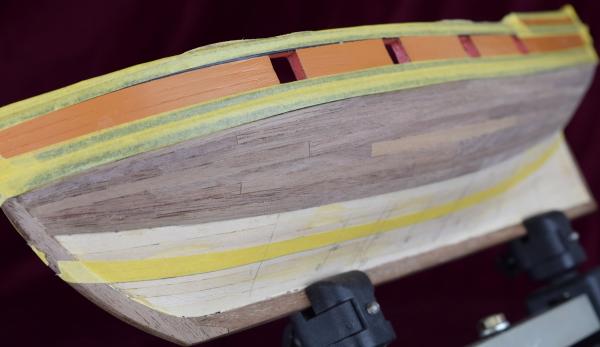
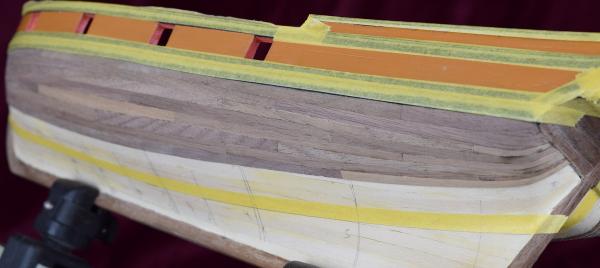
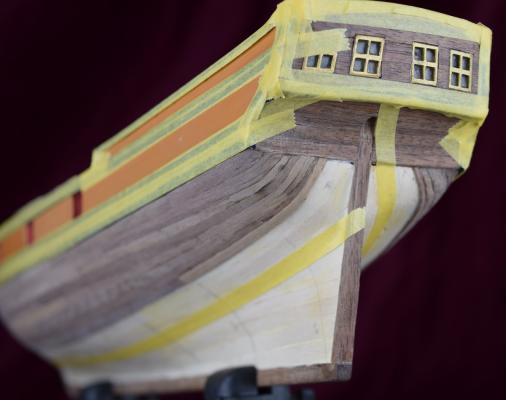
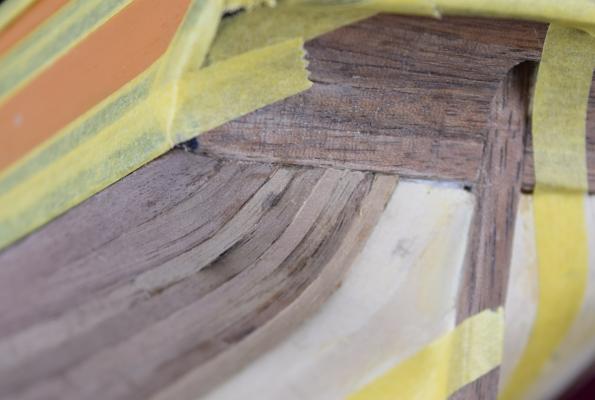

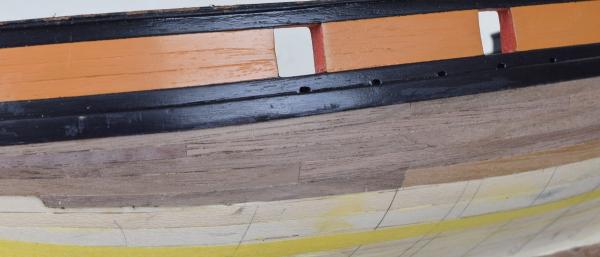
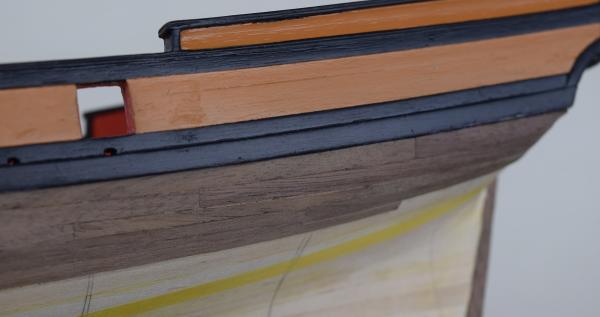
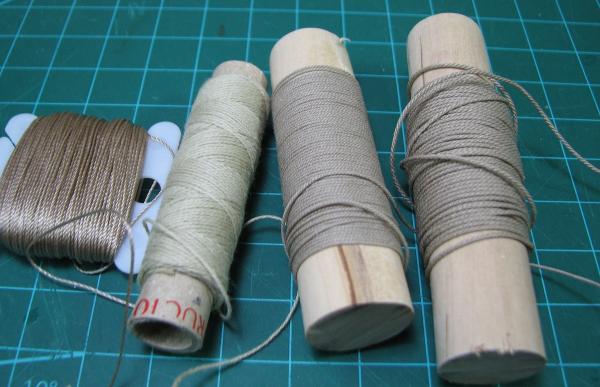
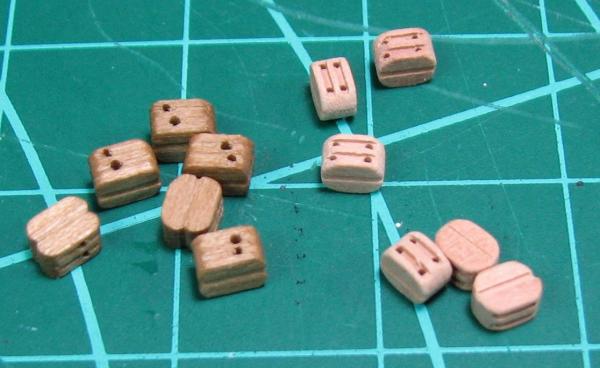
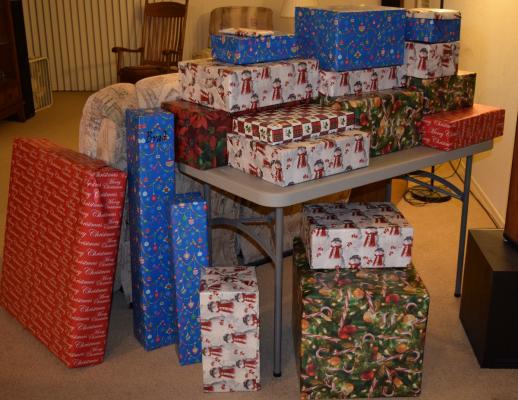
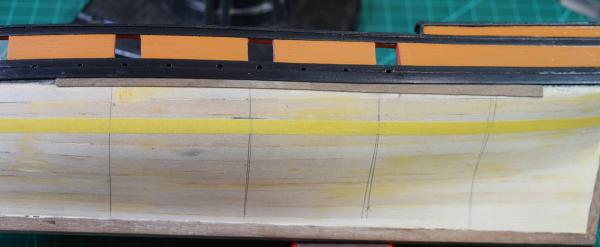

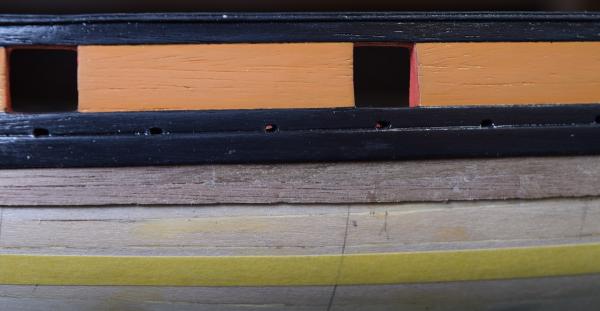

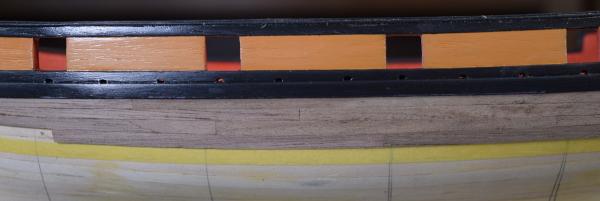
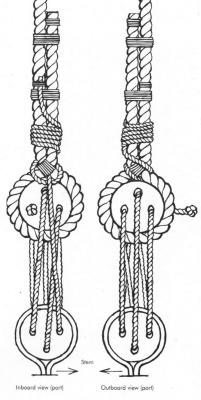
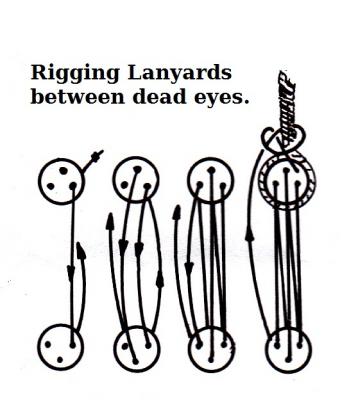
Armed Virginia Sloop by GuntherMT - FINISHED - Model Shipways - scale 1:48
in - Kit build logs for subjects built from 1751 - 1800
Posted
Pretty sure neither of those are thinner than .030"
I'll make it work with a combination of knife trimming of the rabbet itself and sanding blocks to smooth down the planking leading up to the rabbet.